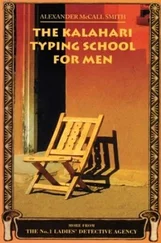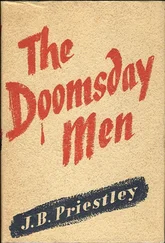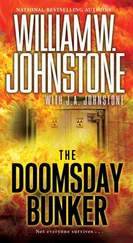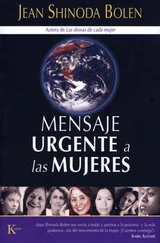As under a green sea, I saw him drowning.
In all my dreams, before my helpless sight,
He plunges at me, guttering, choking, drowning. 47
Disoriented and terrified, soldiers threw away their guns and struggled desperately to climb into fresh air. Any thought of the war vanished from their minds as they fought for breath and for dear life. Many never made it out of their trenches. Afterwards, the shiny brass buttons of all the soldiers caught in the gas had turned green.
The German infantry advanced cautiously behind the cloud of gas. At the last minute they had been issued with improvised cotton mouth-pads. Only the troops of the Pioneer Regiment had been issued with respirators. They were in charge of releasing the gas from the six thousand or so cylinders that had been dug in along a four-mile sector of the line. Fritz Haber had personally supervised the installation of the heavy steel cylinders. They were, said the men, as unwieldy as a corpse.
The go-ahead for the experimental attack had been given in January. It was Haber’s show from beginning to end. He had come up with the idea of releasing chlorine from thousands of cylinders and had even organized their supply. He personally tested the effectiveness of the poison gas clouds. Once he almost died when the wind changed and he was caught in the chlorine without a mask. The Pioneer troops began digging holes for the cylinders on 5 April. Ten cylinders were connected to one lead outlet pipe, which pointed towards French lines. On 22 April about 150 tons of chlorine was released. 48For the first time, scientists were at the front line, leading an attack.
The terrain around Ypres was not ideal for a gas attack. The advancing German soldiers had to pause at patches of low-lying land where the heavy gas still lingered, wraith-like, in the air. But they encountered no resistance; the enemy had either run from the gas or had been overwhelmed by it. A rifleman from Cologne recalled that they walked with their guns tucked under their arms, as if on a casual hunt for wild game. 49Arthur Conan Doyle, creator of the scientific detective Sherlock Holmes, wrote angrily that the German soldiers ‘took possession of… trenches tenanted only by the dead garrisons whose blackened faces, contorted figures and lips fringed with blood and foam showed the agonies in which they had died’. 50The Germans took two thousand prisoners. British soldiers reported that Germans bayoneted many of those they found overcome by fumes. 51
The number of casualties remains disputed. The Allies claimed five thousand dead and twice as many injured in the attack, but those figures were almost certainly exaggerated. 52Depending on how long they were exposed to the gas, some men recovered quite quickly. Others spent their last desperate hours coughing and retching as they gasped for breath. The strain on their hearts, as their lungs gradually filled with fluid, was usually fatal. Many of those who survived faced a future of illness. The threat of chronic bronchitis and lung cancer would plague gas victims for the rest of their lives. 53
The individual fear and suffering of the victims cannot be doubted. The outrage felt by Lieutenant Colonel G. W. G. Hughes of the medical corps was typical:
I shall never forget the sights I saw by Ypres after the gas attacks. Men lying all along the side of the road between Poperinghe and Ypres, exhausted, gasping, frothing yellow mucus from their mouths, their faces blue and distressed. It was dreadful, and so little could be done for them. I have seen no description in any book or paper that exaggerated or even approached in realization of the horror, the awfulness of those gassed cases. One came away from seeing or treating them longing to be able to go straight away at the Germans and to throttle them, to pay them out in some sort of way for their devilishness. Better for a sudden death than this awful agony. 54
Like the British public, The Times was furious at Germany’s flouting of the Hague conventions. It was, said the newspaper, a method of war ‘up to now never employed by nations sufficiently civilized to consider themselves bound by international agreements’. 55British researchers had been exploring the possibilities of tear gas since the end of 1914 and had developed a ‘stink bomb’ codenamed ‘SK’ after South Kensington, where the Imperial College scientists who invented it were based. 56But soldiers on all sides hated the idea of such weapons. As the cold-war military strategist Bernard Brodie put it, rather unsympathetically, it was the ‘traditional reluctance of the military professions to be killed by anything but traditional weapons’. 57Most German commanders refused to take part in Haber’s ‘experiment’ in gas warfare. One general admitted that ‘the commission for poisoning the enemy just as one poisons rats struck me as it must any straightforward soldier; it was repulsive to me’. 58
Many thought that gas warfare was unchivalrous. But the gentlemanly values displayed in no man’s land at Christmas 1914 were outmoded in a war fought with artillery and machine guns. Many writers, such as Malraux, saw chemical warfare as symbolic of the inhuman nature of war in the twentieth century. But the horrors of what we would now call ‘conventional’ weapons are often overlooked. A French soldier described the appalling fate of his friend:
The death of Jégoud was atrocious. He was on the first steps of the dugout when a shell (probably an Austrian 130) burst. His face was burned; one splinter entered his skull behind the ear; another slit open his stomach, broke his spine, and in the bloody mess one saw his spinal cord gliding about. His right leg was completely crushed above the knee. The most hideous part of it all was that he continued to live for four or five minutes. 59
Such individual tragedies were part of the daily experience of soldiers at the front line. In 1916 at the Battle of the Somme,20,000 British soldiers were killed by machine gun fire in the first bloody minutes of the assault. For those, such as the German writer Ernst Jünger, who lived through that unimaginable carnage, it was obvious that chivalry was a thing of the past: ‘Like all noble and personal feelings it had to give way to the new tempo of battle and to the rule of the machine.’ 60A new age of warfare had dawned in which scientists and engineers joined forces with the military to find the most efficient means of destruction for the least expenditure of men and materiel. 61It was the age of the superweapon.
‘Peace upon earth!’ was said. We sing it,
And pay a million priests to bring it.
After two thousand years of mass
We’ve got as far as poison-gas.
Thomas Hardy,
Christmas: 1924
Francis Bacon, one of the founders of what we now call the scientific method, argued that knowledge is power. Nowhere has this been more powerfully demonstrated than on the battlefield. People have always exploited nature’s secrets to gain the upper hand in war. Gunpowder is said to have been discovered in ancient China by Taoist monks searching for the alchemical elixir of eternal life. If that is true, no discovery could ever have so profoundly disappointed its creator. Humankind, it seems, is fated to fall victim to its own ingenuity.
The Catholic Church once tried to put a stop to the science of destruction. A twelfth-century pope banned the cutting-edge battlefield technology of the day – the crossbow. Such a mechanical killing machine was unchivalrous, he said. However, he saw nothing wrong with using it against ‘heathens’, such as Muslims. 1
At the end of the nineteenth century, Alfred Nobel set scientists a bad example when he invented an explosive which he called dynamite, from the Greek word for power, dunamis . ‘I would like’, he told a friend in 1876, ‘to produce a substance or a machine of such frightful, enormous, devastating effect, that wars would become altogether impossible.’ The man whose name became synonymous with scientific achievement made his fortune from the science of destruction. He justified his profits with the hope that ‘on the day that two army corps can mutually annihilate each other in a second, all civilised nations will surely recoil with horror and disband their troops’. 2
Читать дальше












